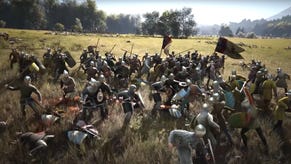WOW's vital statistics revealed
Plus, Blizzard talks cancelled sci-fi RPG.
In a typically detailed presentation to the Austin Game Developers Conference, World of Warcraft producers Frank Pearce and J. Allen Brack have laid bare the structure of the organisation which makes and maintains the MMO.
They also discussed the cancelled game that the WOW team was working on before it chose to focus on entering the MMO market instead: a science-fiction, squad-based RPG called Nomad.
A lot of time was spent on the game, but Blizzard eventually felt that it wasn't what it wanted to make. You can see concept art and read more at Joystiq. A full report on the presentation is available at Gamasutra.
Brack and Pearce revealed that WOW runs on 20,000 computer systems, using 1.3 petabytes of storage and 75,000 CPU cores, and takes the skills of more than 4600 people to operate. The game itself comprises 5.5 million lines of code, two million words of text, 1.5 million art assets, 70,000 spells, 40,000 NPCs and 7650 quests. The game's testers have tracked 180,000 bugs since it launched.
Pearce noted that Blizzard takes a "substantial loss" on its BlizzCon fan conventions, despite selling 20,000 tickets at over $100 apiece, plus internet and cable TV feeds. "It's a huge marketing opportunity, so that's the benefit we get out of that," he said, according to GameSpot.
The pair also offered an interesting insight into how Blizzard structures its creative staff. WOW is led by three tiers of management; executive producer Pearce at the top, Brack and lead designer Tom Chilton below him, and eight managers reporting to them. There are 30 department leads and teams are structured around employee's individual strengths.
However, the game has only 10 people working in production, who are viewed as support staff rather than management. Creative teams report not to these producers but to practising team leads who still work actively on the game - the art lead, for example, still creates art for the game.
There's masses more detail in the Gamasutra write-up. For a further behind-the-scenes look into the genesis of the game, read Eurogamer's recent Making of World of Warcraft.







